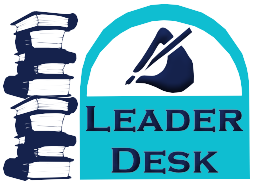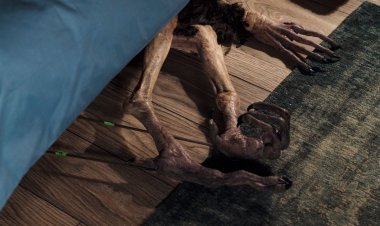Building Hello Tomorrow’s playfully retrofuturistic world
Production designer Maya Sigel talks about creating an optimistic version of 1950s sci-fi, with cute bots and lots of superfluous gadgets. It didn’t take long for Maya Sigel to agree to work on Hello Tomorrow, the new series on Apple TV Plus. A production designer, Sigel had previously worked on projects like The Girlfriend Experience and I Am Not Okay With This.
/cdn.vox-cdn.com/uploads/chorus_asset/file/24453129/Hello_Tomorrow_Photo_010305.jpg)
Production designer Maya Sigel talks about creating an optimistic version of 1950s sci-fi, with cute bots and lots of superfluous gadgets.
It didn’t take long for Maya Sigel to agree to work on Hello Tomorrow, the new series on Apple TV Plus. A production designer, Sigel had previously worked on projects like The Girlfriend Experience and I Am Not Okay With This. But there was something about the retrofuturistic vibe of Hello Tomorrow that spoke to her. “I’ve always been interested and inspired by the design of the 1950s,” she says. “There is something that I’ve always been attracted to about the way that architects and artists were really looking toward the future and what the world could be during that time period.”
The show takes place in an alternate version of the ’50s, one with chunky sci-fi gadgets and helpful robots and salesmen who travel from town to town, pitching people on living at the Brightside Lunar Colony. For Sigel, part of the appeal of the project was the two seemingly conflicting ideas at the core of the story.
“There’s the optimism and the idea of hope for the future and selling people this hopeful future,” she explains. “And then there’s also the reality, which is this limitless capitalism and consumerism, and this idea that it’s never enough. People, no matter how many gadgets they have that they think will make their lives better, it will never be enough.”
This duality manifested in the design. Much of Hello Tomorrow takes place in the small town of Vistaville, which represents the past and is rendered in warm tones and natural materials like wood and stone. Brightside, meanwhile, is that vision of the future, with sleek steel and aluminum and a much cooler color palette. In between those two worlds is the Vista Motor Lodge, a motel where many of the scenes take place. It has the warmer, more Earth-y tone but with plenty of fun futuristic gadgets — including a robot bartender and video call booths. “The Vista Motor Lodge is kind of in between the two worlds,” says Sigel. “It meshes them. It also anchors our story and where you spend the most time during the season.”
The Vista itself was a set built for the show, including a lobby, conference room, and the actual rooms where many of the characters stay. And while it was designed to look ripped out of the ’50s, it also required some tinkering for all of the gadgets. “Within the Vista, there was a lot of thought that went into: what is the future tech going to be in each set?” Sigel explains. “The showrunners always loved this idea of having an automat somewhere in the show, so I thought it would be fun to make the bar like an automat. You can see all the bottles, and there are names of different drinks with buttons, and then instead of a bartender, there’s one of our bots behind the counter at all times.”
As for the tech itself, one of the goals was to make everything as practical as possible. Many of the gadgets had working lights and switches so that the actors could interact with them, and the cylindrical bots were operated by puppeteers. From there, the props were enhanced by the VFX team. Sigel says that, with all of the technology built for the show, the idea was to evoke that optimism inherent in the premise.
“It was really important for everyone that the bots be friendly looking,” she says. “The last thing we wanted was for it to look like they were menacing, or it’s a show where maybe the bots are going to take over and start killing people. So with the bots and all of the gadgets, there’s something friendly and accessible to them. We also wanted there to be something a little bit clunky about all of it. It was important that it looked like it could have been made in the 1950s. Of course, it’s its own world — there were no robots in the 1950s — but it feels like it could belong in that era.”
/cdn.vox-cdn.com/uploads/chorus_asset/file/24453407/Vista_Bot.jpg) Image: Maya Sigel
Image: Maya SigelThat playful nature also comes through in how superfluous many of the gadgets are. Characters relax at ball games with a cup of self-popping popcorn while kids deliver newspapers with a wagon that shoots out papers like a T-shirt canon. There are Rube Goldberg-like machines for stocking grocery store shelves and glass domes that can quickly cook a roast. “A lot of the stuff is just fun, and you don’t really need it,” admits Sigel. My personal favorite: a towering stack of nachos with a button that releases a stream of cheese.
Nailing the vibe naturally involved a lot of research. Sigel and her team found themselves digging through old Sears catalogs and hotel postcards, scouring art and architecture books from the time, and watching videos from those “world of the future” exhibits that car and appliance companies seemed to love to put together. Eventually, it got to the point that staff members were bringing in their own materials from home. “The great thing is I started with a lot of research, and then it was a project that everyone was so excited about, so people just brought in stuff,” Sigel says. “‘Here’s this paint catalog that’s been sitting in my garage for 30 years.’ So we really had a great library going in my office.”
She says that by the time work was underway, everyone on the team really understood the aesthetic they were going for. And in the rare cases where something didn’t look quite ’50s enough, there was a simple solution: “Maybe we add an analog clock or some big chunky buttons to give it that retro look.”
(Except for the headline, this story has not been edited by Leader Desk Team and is published from a syndicated feed.)



























